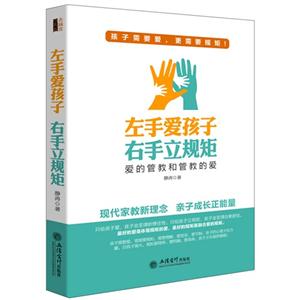全国高等学校外语教师丛书·科研方法系列第二语言研究中的问卷调查方法(2017)

|
全国高等学校外语教师丛书·科研方法系列第二语言研究中的问卷调查方法(2017)作者:(英)佐尔坦·德尔涅伊,(日)龙谷田口 开 本:其他 书号ISBN:9787513514439 定价:53.9 出版时间:2019-04-01 出版社:外语教学与研究出版社 |
全国高等学校外语教师丛书·科研方法系列第二语言研究中的问卷调查方法(2017) 内容简介
问卷调查在第二语言研究中应用广泛,问卷的质量往往决定了研究的质量。 《第二语言研究中的问卷调查方法(2017 第2版)》针对问卷设计、实施、数据分析等各个阶段为读者提供了全面指导,以帮助使用者设计一份有效的问卷。 《第二语言研究中的问卷调查方法(2017 第2版)》包括五章:**章探讨了问卷的性质、优缺点,及问卷在定性、定量研究中的应用;第二至四章通过大量实例分别详细介绍了问卷的设计、实施与数据分析方法;第五章提供了一个具体的国外研究实例,展示如何运用书中方法为一个关于学习动机的研究设计问卷。 *后,《第二语言研究中的问卷调查方法(2017 第2版)》特别增加了一个中文研究案例,以帮助国内读者更好地理解问卷调查方法的应用。 《第二语言研究中的问卷调查方法(2017 第2版)》操作性、实用性很强,也有较高的理论价值。适合外语教学研究工作者使用,也可作为研究方法课程参考书及外语教师培训参考资料。
全国高等学校外语教师丛书·科研方法系列第二语言研究中的问卷调查方法(2017) 目录
总序导读——第二语言研究中问卷调查法的特点及应用
Preface to the Second Edition
Introduction
Chapter 1 Questionnaires in Second Language Research
1.1 What Are“Questionnaires”and What Do They Measure?
1.1.1 What a Questionnaire Is Not
1.1.2 What Do Questionnaires Measure?
1.2 Using Questionnaires:Pros and Cons
1.2.1 Advantages
1.2.2 Disadvantages
1.3 Questionnaires in Quantitative and Qualitative Research
Chapter 2 Constructing the Questionnaire
2.1 General Features
2.1.1 Length
2.1.2 Layout
2.1.3 Sensitive Topics and Anonymity
2.2 The Main Parts of a Questionnaire
2.2.1 Title
2.2.2 Instructions
2.2.3 Ouestionnaire Items
2.2.4 Additional Information
2.2.5 Final“Thank YDu”
2.3 Appropriate Sampling of the Questionnaire Content and the Significance of“Multi—Item Scales”
2.3.1 Appropriate Sampling ofthe Content
2.3.2 Using Multi—Item Scales
2.4 “Closed.Ended”Ouestionnaire Items
2.4.1 Rating Scales
2.4.2 Multiple—Choice Items
2.4.3 Rank Order Items
2.4.4 Numeric Items
2.4.5 Checklists
2.5 Open—Ended Questions
2.5.1 Specific Open Questions
2.5.2 clarification Questions
2.5.3 Sentence Completion Items
2.5.4 Short—Answer Questions
2.6 HOW to Write Good Items
2.6.1 Drawing Up an“Item Pool”
2.6.2 Rules About Writing Items
2.6.3 WrRing Sensitive Items
2.7 Grouping and Sequencing Items
2.7.1 Clear and Orderly Structure
2.7.2 Opening Questions
2.7.3 Factual(or“Personal”or“Classification”、Questions at the End
2.7.4 Open—Ended Questions at the End
2.8 Translating the Questionnaire
2.8.1 Translation as a Team—Based Approach
2.8.2 Translation with Limited Resources
2.9 Computer Programs for Constructing Questionnaires
2.10 Piloting the Questionnaire and Conducting Item Analysis
2.10.1 Initial Piloting of the Item Pool
2.10.2 Final Piloting("Dress Rehearsal”
2.10.3 Item Analysis
Chapter 3 Administering the Questionnaire.
3.1 Selecting the Sample
3.1.1 Sampling Procedures
3.1.2 How Large Should the Sample Be?
3.1.3 The Problem of Respondent Self.Selection
3.2 Main Types of Questionnaire Administration
3.2.1 Administration bv Mail
3.2.2 One—to—One Administration
3.2.3 Group Administration
3.2.4 Online Administration
3.3 Strategies to Increase the Quality and Quantity of Participant Response
3.3.1 Advance Notice
3.3.2 Attitudes Conveyed by Teachers,Parents,and Other Authority Figures
3.3.3 Respectable Sponsorship
3.3.4 The Presence of a Survey Administrator
3.3.5 The Behavior of the Survey Administrator
3.3.6 Communicating the Purpose and Significance ofthe Survey
3.3.7 Emphasizing Confidentiality
3.3.8 Reading Out the Questionnaire Instructions
3.3.9 The Style and Layout of the Questionnaire
3.3.10 Promising Feedback on the Results
3.4 Questionnaire Administration,Confidentiality,and Other Ethical Issues
3.4.1 Basic Ethical Principles of Data Collection
3.4.2 Obtaining Consent for Children
3.4.3 Strategies for Getting Around Anonymity
Chapter 4 Processing Questionnaire Data
4.1 Coding Questionnaire Data
4.1.1 First Things First:Assigning Identification Codes
外语 英语学术著作
在线阅读
- 最新内容
- 相关内容
- 网友推荐
- 图文推荐
零零教育社区:论坛热帖子
| [高考] 2022 西安电子科技大学《软件工程》大作业答案 (2022-04-25) |
| [家长教育] 孩子为什么会和父母感情疏离? (2019-07-14) |
| [教师分享] 给远方姐姐的一封信 (2018-11-07) |
| [教师分享] 伸缩门 (2018-11-07) |
| [教师分享] 回家乡 (2018-11-07) |
| [教师分享] 是风味也是人间 (2018-11-07) |
| [教师分享] 一句格言的启示 (2018-11-07) |
| [教师分享] 无规矩不成方圆 (2018-11-07) |
| [教师分享] 第十届全国教育名家论坛有感(二) (2018-11-07) |
| [教师分享] 贪玩的小狗 (2018-11-07) |






